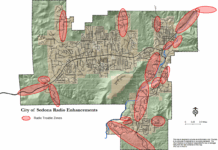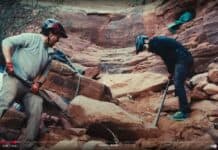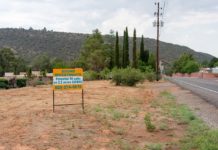Re-evaluating land use and zoning codes in Sedona is the first step toward building affordable housing, an Arizona State University?s Stardust Center for Affordable Housing and the Family architect said.
Larson Newspapers
________________
Re-evaluating land use and zoning codes in Sedona is the first step toward building affordable housing, an Arizona State University"s Stardust Center for Affordable Housing and the Family architect said.
Michael Pyatok, architect and director of the foundation, visited Sedona on April 11 to talk to Sedona City Council about affordable or workforce housing.
"Affordable housing can be an asset to your community," Pyatok said.
 |
|
| Mal Cooper/Larson Newspapers |
To achieve construction costs that allow housing to be affordable, Sedona needs to be willing to get "cozy," according to Pyatok. Pyatok uses the word "cozy" in place of "dense" to eliminate the negative associations with density.
"It"s not done by magic. It"s done by dollars," Pyatok said, and saving dollars means trimming initial costs.
Sedona also needs to allow for more mixed use, "coziness" and modified street set-back standards among other exceptions, Pyatok said.
Those most impacted by the issue including business owners who can"t find employees and neighborhoods where the units would be built need to be identified as well, according to Pyatok.
To get a community to support construction of affordable housing, Pyatok said it needs to be educated on the need and involved in the process.
"There"s a lot of misunderstanding about affordable housing," Pyatok said. Who will live there, construction quality and aesthetics are just a few concerns residents often have.
Pyatok suggests four elements he said help a community embrace rather than reject the idea of affordable housing. These include:
- Participatory design in which neighbors are involved from the very beginning.
- Collaborative design involving city planning staff.
- Fitting the context of the city in terms of history, climate and natural beauty.
- Personal-ization, or providing the opportunity for residents to make charges, additions and add self-expression to affordable units.
Pyatok showed council examples of projects from California, Washington and Phoenix ranging from eight or 10 units per acre all the way up to 25 units per acre.
Pyatok, who lives in Phoenix, joked that eight to 10 units per acre is still rural to him.
Tandem parking, sharing yards and clustering are few other suggestions Pyatok offered.
Specific examples included a "big "house"" consisting of three attached townhomes built to look like one large house and apartments complexes modeled to look like bed and breakfasts.
"Apartment buildings don"t have to look like these inevitable ugly boxes," Pyatok said.
Pyatok said he couldn"t offer specific examples of location or design for Sedona because he doesn"t have much experience in the area.
Linda Mar-tinez, chair of the city"s housing commission, told council she wants to quickly move forward with planning, but council said the city needs to be patient.
"It seems like we have to take these little steps," Mayor Pud Colquitt said.
Educating the community on the need and listening to concerns, council decided, is the first step.




















